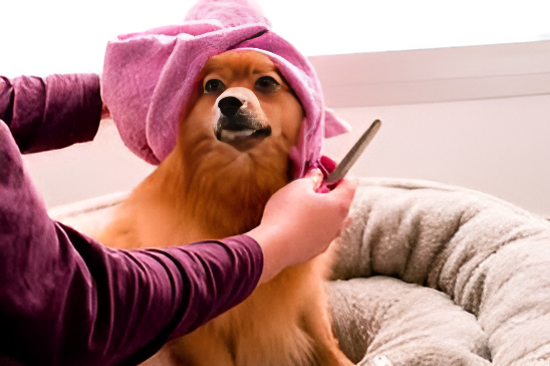Grooming Tips and Techniques for Your Furry Pets

Maintaining your pet's appearance is only one aspect of grooming; it is also crucial to their general health and wellbeing. Whether you own a sleek rabbit, a curly-coated dog, or a fluffy cat, regular grooming can help avoid health problems, lessen shedding, and improve your relationship with your pet. These are some vital grooming pointers and methods to maintain your pets' amazing appearance and well-being.
1) Brushing
Why It’s Important: Frequent brushing aids in getting rid of debris, grime, and loose fur. In long-haired pets, it also lessens the possibility of matting and tangling, which can lead to discomfort and skin problems.
Techniques:
- Short-Haired Pets: To get rid of loose fur and dirt, use a grooming mitt or bristle brush.
- Long-Haired Pets: To gently untangle and smooth out their coat, use a comb or slicker brush. For maximum comfort, brush in the direction that your hair grows.
Frequency: Brush your pet at least once every week. Pets with long hair could require more frequent brushing, particularly when shedding is occurring.
2) Bathing
Why It’s Important: Cleaning your pet's coat and skin with a bath eliminates oils, dirt, and allergies. For pets that have allergies or spend a lot of time outside, it is very advantageous.
Techniques:
- Choose the Right Shampoo: Use a shampoo designed specifically for pets that is kind to their skin and coat. Human shampoos are not to be used; they can be overly strong.
- Water Temperature: To avoid pain, make sure the water is just warm enough.
- Thorough Rinsing: To prevent skin irritation, make sure to thoroughly rinse away the shampoo.
Frequency: Every four to six weeks or when they become especially filthy, give your pet a bath as needed.
3) Nail Trimming
Why It’s Important: Keeping your pet's nails trimmed helps avoid overgrowth, which can hurt them, interfere with their walking, and sometimes result in accidents.
Techniques:
- Use Proper Tools: Invest in a pet nail grinder or high-quality nail clippers.
- Trim Gradually: Cut only a small portion at a time, being careful not to sever the quick—the blood vessel inside the nail.
- Reward Your Pet: Treat them and give them praise to make the event enjoyable.
Frequency: Depending on how quickly they develop, you should trim your pet's nails every three to four weeks.
4) Ear Cleaning
Why It’s Important: Frequent ear cleaning helps get rid of wax buildup and avoid infections. Pets that have floppy ears or are prone to ear infections should pay particular attention to this.
Techniques:
- Use a Pet Ear Cleaner: On a cotton ball or pad, dab a tiny bit of ear cleanser. Wipe the inner part of the ear gently; do not wipe the ear canal.
- Check for Redness or Odor: See your veterinarian if you observe any infection-related symptoms.
Frequency: Once a month, or more frequently depending on your pet's ear health, clean their ears.
5) Dental Care
Why It’s Important: To avoid gum disease, plaque accumulation, and foul breath, practice good dental hygiene. Your pet's dental health can be preserved with routine brushing and examinations.
Techniques:
- Pet Toothbrush and Toothpaste: Make use of toothpaste made specifically for pet needs and a toothbrush made for animals.
- Brush Gently: Keep your brushing efforts focused on the tooth surfaces where plaque tends to collect.
Frequency: If at all feasible, give your pet's teeth a few times a week or daily brushing.
6) Eye Care
Why It’s Important: Keeping your pet's eyes clean lowers the chance of tear stains and helps avoid infections.
Techniques:
- Wipe Away Debris: To carefully remove any discharge or debris from the area surrounding the eyes, use a damp cotton ball.
- Monitor for Signs: Keep a watch out for any signs of redness, excessive tears, or squinting that can point to an eye issue.
Frequency: Every week or as needed, give your pet's eyes a checkup and cleaning.
Pet grooming is more than simply a ritual; it is essential to your pet's general wellbeing. You can make sure that your pet is clean, cozy, and happy by implementing these grooming tips and procedures into your daily routine. If you have any questions about your pet's grooming requirements, speak with your veterinarian. Also, keep in mind to make grooming a joyful experience for your pet, filled with lots of care and treats.



